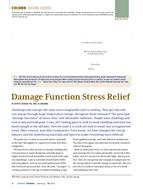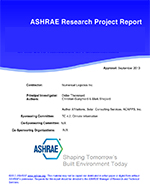Presents an analysis, based on combined monitoring and simulation of the dynamic interaction between HVAC system in operation and an occupied office room. The detailed two-week monitoring, including surface and room air temperatures and energy flows, was carried out in an occupied office room. Measured variables, such as ambient temperature, solar irradiation, heat gain by lights, etc, were used as input data for the simulations. An analysis of possible discrepancies between expected performance and monitored performance is thereby facilitated. The building in question has a variable-air-volume (VAV) system for individual room temperature control. The measured air temperature of the room is 23 deg + or – 0.3 deg C. The analysis of the data monitored and the simulation results indicate that the thermal peak demand would decrease during periods of high heat loads with the heater turned off completely and the supply air flow reduced. A somewhat larger room air temperature variation also must be permitted then. The alternative system design, a constant-air-volume (CAV) system, would reduce the thermal peak demand from 350 W to 135 W for the supply air system exclusively. The analysis indicates that the energy stored in the structure may be more efficiently utilised if a greater room temperature variation, 22 deg C + or – 1 deg C, is permitted. The simulations were made using a Swedish simulation program for building thermal behaviour. Comparisons between monitored and simulated data correlate well.
KEYWORDS: heating, ventilation, air conditioning, calculating, monitoring, measuring, energy consumption, performance, offices, rooms, buildings, surface temperature, air temperature, ambient temperature, solar radiation, heat gain, lighting, variable volume air conditioning, computer programs, comparing
Citation: Symposium Papers, Baltimore, MD, 1992
Product Details
- Published:
- 1992
- File Size:
- 1 file , 860 KB
- Product Code(s):
- D-17852


